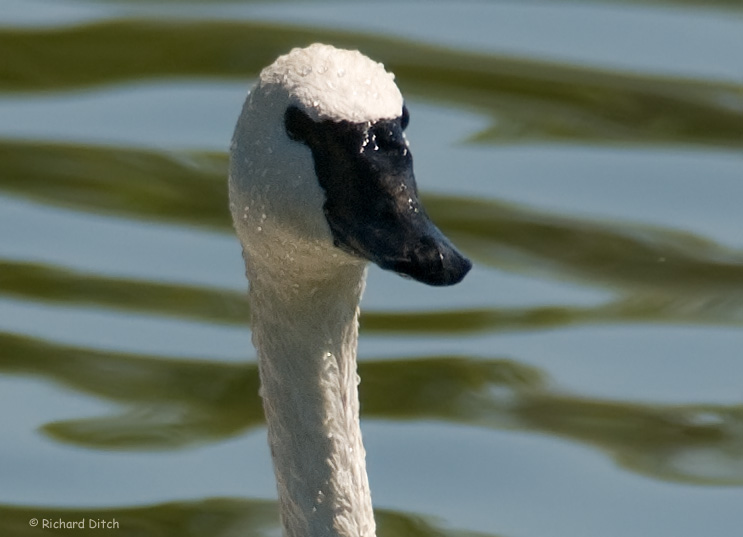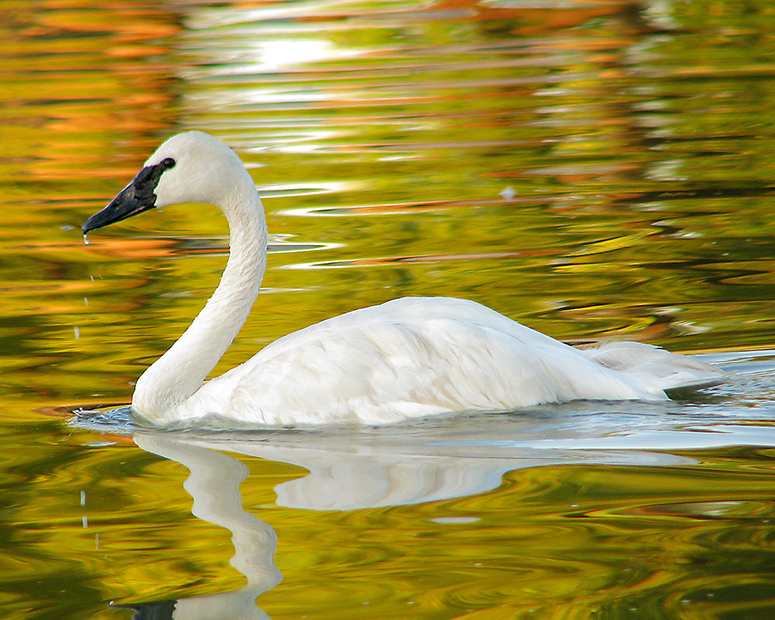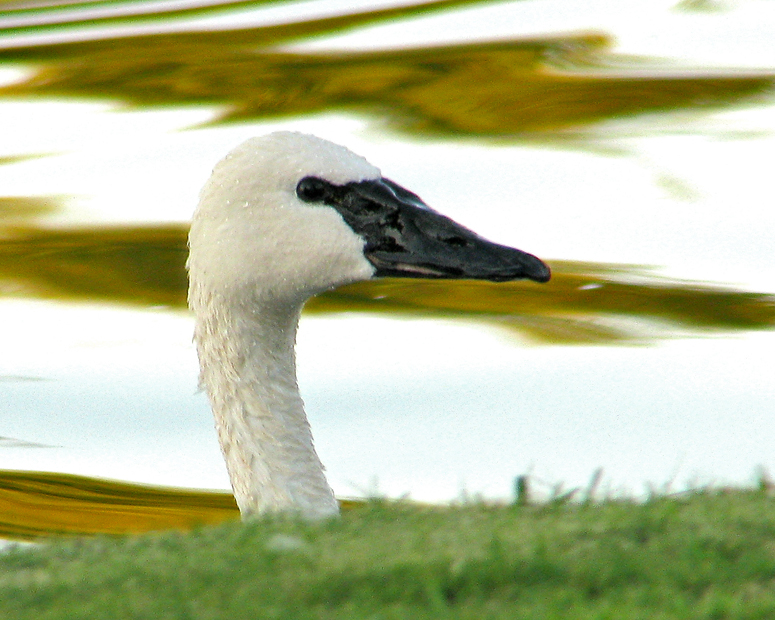 |
 |
|||||||||||||||||||||
|
||||||||||||||||||||||
Tundra Swan (Cygnus columbianus), Kiwanis Park, Tempe, Maricopa County
This Tundra Swan was discovered by Ron and Ann Thomas on 06 September 2008 at an urban park in Tempe and photographed by Rich Ditch and Pierre Deviche.
Tundra
Swans are normally among the wariest wild birds. People became suspicious that
this was not a wild bird because 1) this bird is extremely tame and will swim
over to accept bread handouts and 2) because of the extremely early date.
Tundra Swan is normally a rare winter visitor to Arizona. There are no
previous reports earlier than November. It was finally shown that the bird
is missing its right hind toe (hallux). Federal law requires all migratory
waterfowl held in captivity to be marked in this way. Therefore, this is
an escaped or intentionally released captive bird. Nevertheless, it
provides a unique opportunity to study this difficult to identify and normally
very wary species up close.
Separation of adult Tundra and Trumpeter Swans when seen this well is normally straightforward because adult Tundra Swans have a yellow loral spot that Trumpeter Swans lack. It was first thought that this bird was a rare example of an adult Tundra Swan lacking a yellow loral spot. However, subsequent very close range photographs showed a very reduced yellow loral spot on one side only. This absolutely confirms this as a Tundra Swan. In birds where the loral spot is absent or difficult to see, the key identification points visible in the pictures are:
1) U-shaped forehead. The forehead is V-shaped in Trumpeter.
2) Narrow or "pinched" facial skin connecting the bill and the eye, giving the
eye a separated appearance from the bill. In Trumpeter the facial skin is
broader and the eye and the bill appear to be part of a single triangle.
In this bird, the absence of a strong loral spot makes the facial skin appear
wider and more Trumpeter-like.
3) A "kink" in the line running from the eye to the base of the bill (best shown
in the third and fifth photos). In Trumpeter, this line is straight.
4) The "peaked" shape of the back. Trumpeter is typically lower and
rounder, although this of course varies with posture.
5) Less massive bill. In adult Trumpeter, the large massive bill almost
appears to engulf the rest of the head.
Click here for an excellent reference on swan
identification or visit this web page.
Identification of immature swans is much trickier because the bill and facial
skin grow and change shape during the first year of life.


06 September 2008, photos by Rich Ditch


06 September 2008, photos by Pierre Deviche
Note the indistinct, tiny yellow loral spot in this picture which absolutely confirms this as a Tundra Swan. This yellow spot is only present on one side and cannot be seen unless the light is just right.

Note that the right leg is missing the hind toe (hallux) which is present on the left leg.

All photos are copyrighted© by the photographer
Submitted on 07 September 2008
|
©2005
|
HOME | | | REPORT SIGHTINGS | | | PHOTOS | | | BIRDING | | | JOURNAL | | | ABOUT US | | | CHECKLISTS | | | AZ BIRD COMMITTEE | | | EVENTS | | | LINKS |